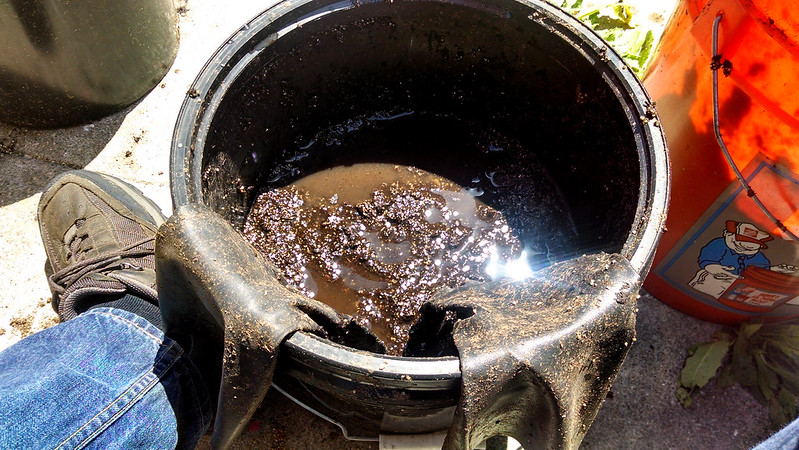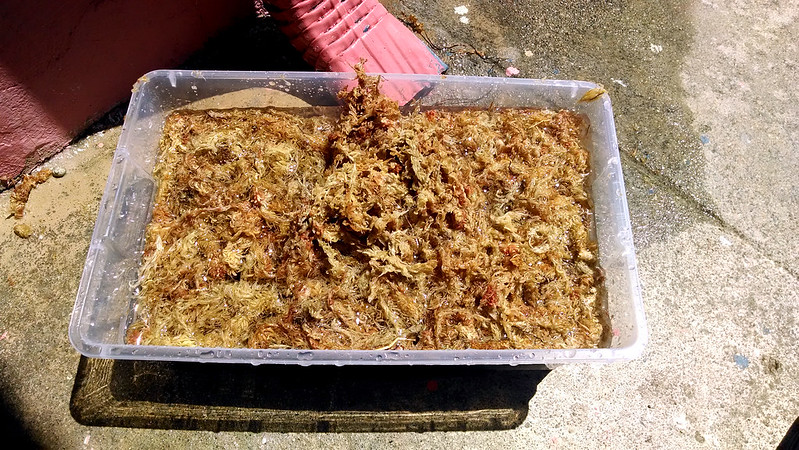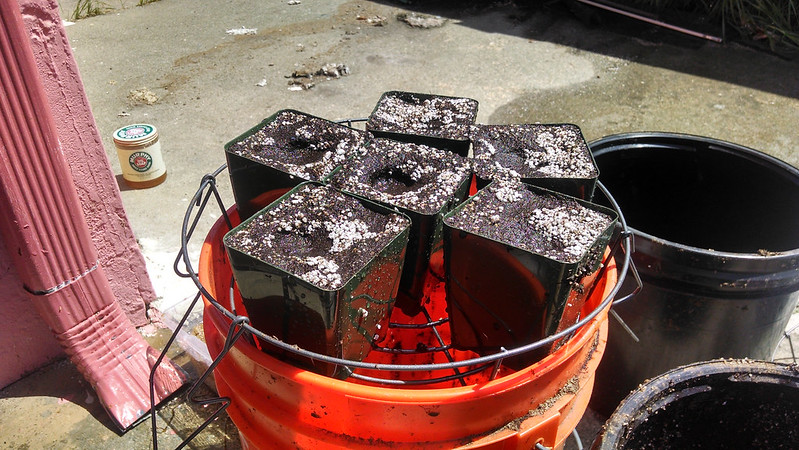This is part of a series of posts describing various aspects of cultivation, which will hopefully be useful to new growers trying to solve the challenges of growing carnivores, and experienced growers who are always looking to improve their collection. The full series can be read here, or by topic on the Series page.
Carnivorous plants have fairly specific needs when it comes to their media, and carnivorous plant-appropriate soil isn't available for purchase most places. This means that most growers mix their own media to suit the needs of individual species or genera or whatever subcategories lie between. The most common "CP mix" is a 1:1 blend of sphagnum peat and aggregate, usually coarse silica sand or perlite. Long-fiber sphagnum moss is used for some species, while others really want to live in live sphagnum. There are also other, more complex blends used for Nepenthes or Pinguicula or Cephalotus, but I don't have any of those in my collection at the moment (except for one P. gigantea) so I can't comment on that.
In addition to just mixing the materials properly, one must also wet the peat, and ideally clean the media somehow. Carnivores like nutrient-poor, low mineral content soil, which is particularly important when using tray watering, as I do, since nutrients and minerals don't get flushed out very readily when standing in water. It's also a good idea to wash out any spores that may lead to undesired moss or algae or fungus growth.
I learned how to rinse my media from Grow Sundews, where he strongly emphasizes the value of washing. However, the technique he elaborates is laborious, messy, tiresome, and wasteful – at least how I do it. I'm certain there must be a more efficient system than the one I've worked out myself. Rinsing the sand is actually not bad, but the soaking and wringing out of the peat takes a long time, and I end up throwing out a lot that gets mixed up in the water. A few days ago I decided to try simply running water through the pots to flush them, which is a technique another grower shared with me.
I began with a bucket of peat and sand.
 |
| Bucket of media. I have several buckets lying around the backyard that are used for this purpose. |
 |
| Long-fiber Chilean sphagnum moss. LFS is very easy to hydrate and wash, and I would use it much more if it were less expensive. |
 |
| Some plants like to live in all LFS, but for the rest I just do a layer at the bottom. |
 |
| Flushing the pots. I used the bucket to catch waste water, but ended up not doing anything with it. Oh well. |
I was lucky to have prepared the pots, as some NASC plants were delivered later that day, and 6 pots was perfect. I'll have pictures of them soon. And if I stumble upon any improvements to my media preparation, expect to hear about it here.
I'm using 1 part coconut coir and 2 parts quartz sand (3-4 mm diameter), is good for my d. omissa and spatulata.
ReplyDelete